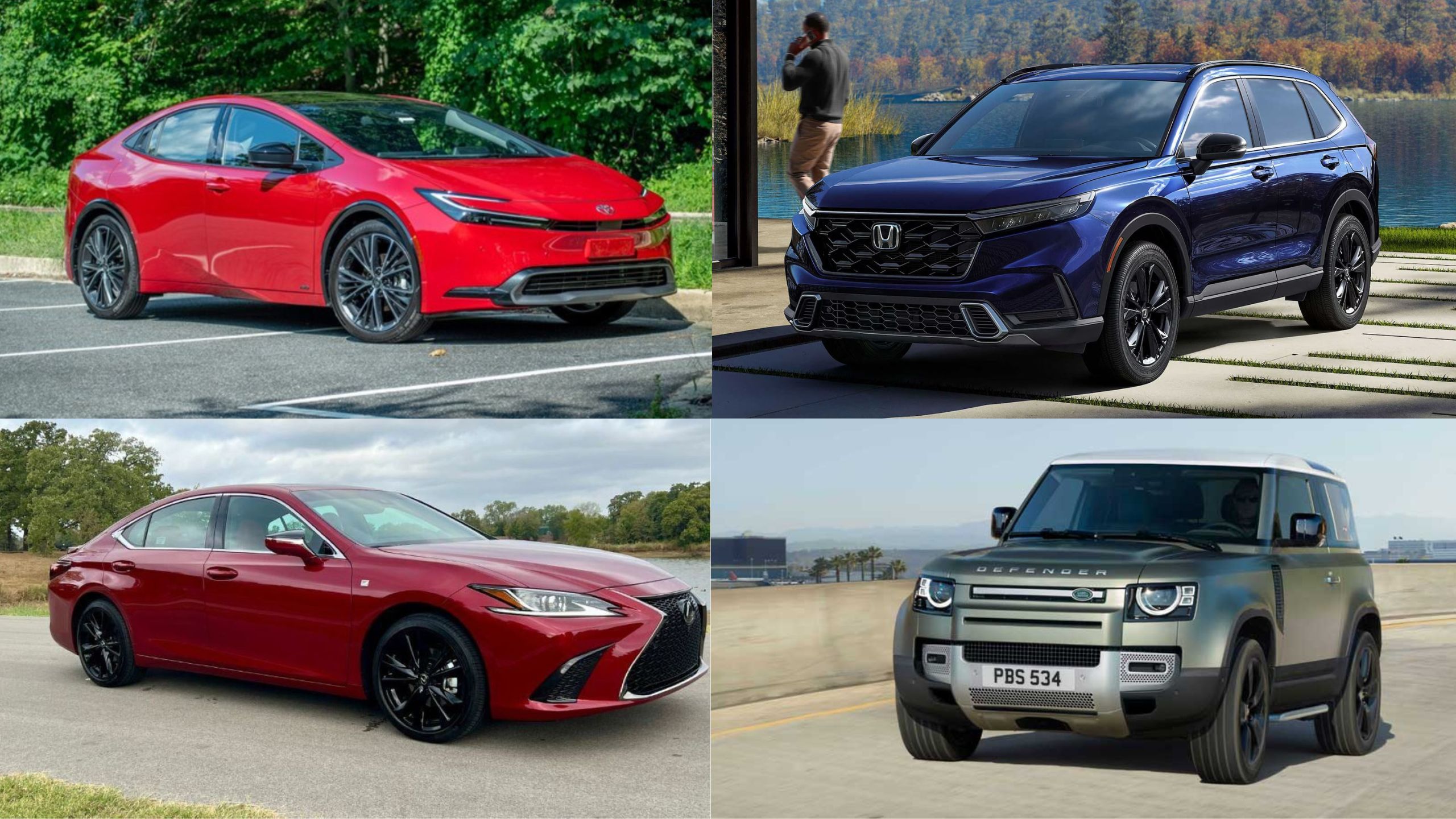Traffic congestion has become an unavoidable reality for many drivers worldwide. While sitting in bumper-to-bumper traffic is frustrating for everyone, the experience can vary dramatically depending on your vehicle.
Some cars are engineered to handle the stop-and-go grind with remarkable efficiency, keeping their cool even during extended idle periods. Their cooling systems, transmission designs, and engine characteristics are optimized for low-speed operation and frequent stops.
Conversely, other vehicles, particularly high-performance models or older designs, can struggle significantly in traffic conditions, with temperatures rising dangerously as they crawl along.
This temperature management issue isn’t just an inconvenience; it can lead to expensive repairs, reduced engine lifespan, and even roadside breakdowns.
Understanding which vehicles excel or struggle in traffic can inform your next vehicle purchase, especially if your daily commute involves congested urban areas.
This guide explores five vehicles renowned for their traffic resilience and five notorious for overheating issues, examining the engineering factors behind their performance in slow-moving conditions.
Vehicles That Thrive in Traffic
1. Toyota Prius
The Toyota Prius has established itself as the quintessential traffic-friendly vehicle since its debut over two decades ago. Its hybrid powertrain is specifically engineered to excel in stop-and-go conditions, where conventional vehicles struggle most.
The Prius’s secret lies in its intelligent power management system that seamlessly transitions between electric and gasoline power sources depending on driving conditions.
In heavy traffic, the Prius primarily operates on its electric motor, allowing the gasoline engine to shut down completely when the vehicle is stationary or moving at low speeds.
This dramatically reduces engine heat generation during traffic congestion. When the engine does run, it operates at its most efficient temperature range thanks to the hybrid system’s load balancing.
The Prius employs an electric water pump rather than a traditional belt-driven one, ensuring consistent cooling system performance regardless of engine RPM.
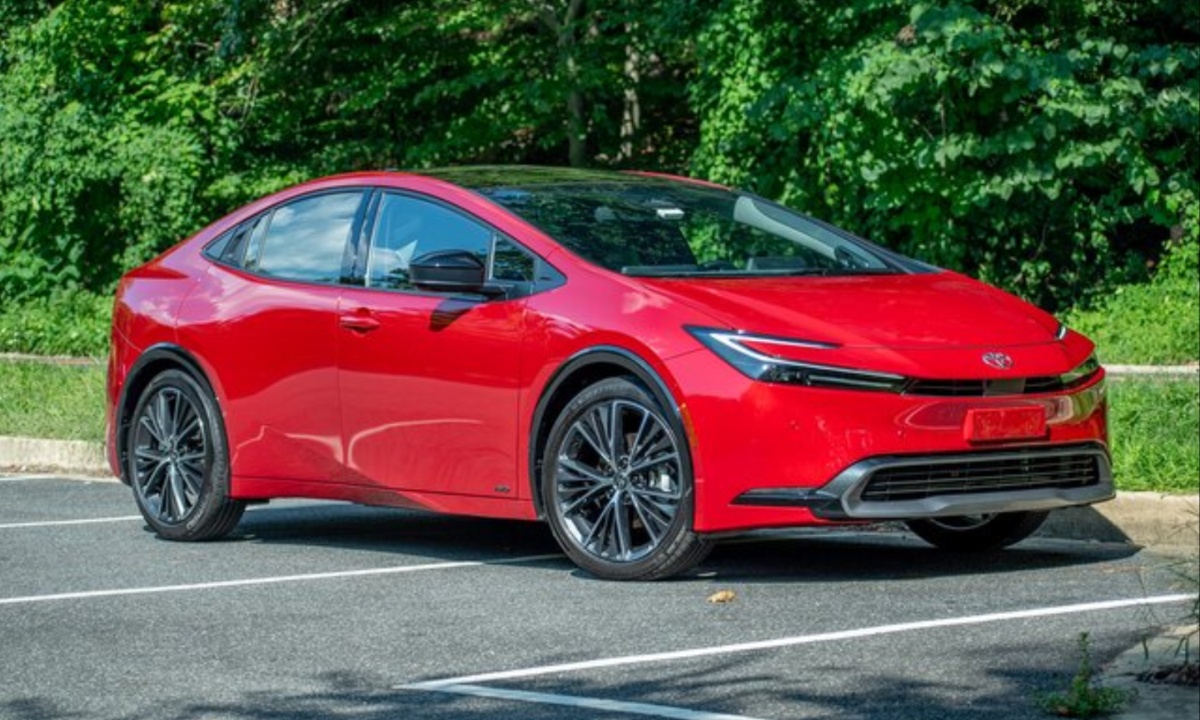
Toyota’s engineers implemented a sophisticated thermal management system that includes multiple radiators, one for the engine and another for the inverter and electric drive components. This dual cooling approach prevents heat from building up in any single system.
The Prius also utilizes an Exhaust Heat Recovery System that captures otherwise wasted heat to warm the engine more quickly to its optimal operating temperature, reducing the strain during cold starts often experienced in traffic situations.
The continuously variable transmission (CVT) eliminates the heat-generating friction of traditional automatic transmissions’ torque converters. Additionally, the regenerative braking system converts kinetic energy back into stored electrical energy while reducing brake wear and the associated heat generation.
These combined technologies not only keep temperatures under control but also contribute to the vehicle’s exemplary fuel efficiency in congested driving conditions, making the Prius a standout performer when traffic slows to a crawl.
2. Honda CR-V Hybrid
The Honda CR-V Hybrid represents a masterclass in engineering for traffic congestion. Honda’s two-motor hybrid system, branded as Intelligent Multi-Mode Drive (i-MMD), allows the CR-V to go through the dense traffic with remarkable thermal stability.
Unlike traditional vehicles that rely solely on mechanical energy conversion, the CR-V Hybrid’s system incorporates a generator motor and a propulsion motor alongside its 2.0-liter Atkinson-cycle engine, enabling it to operate in three distinct drive modes that optimize performance based on traffic conditions.
When crawling through stop-and-go traffic, the CR-V primarily operates in EV Drive mode, where the gasoline engine remains dormant while the propulsion motor draws power directly from the battery.
This significantly reduces heat generation at the source. As traffic eases and speeds increase slightly, the system transitions to Hybrid Drive mode, where the gasoline engine powers the generator motor, which in turn supplies electricity to the propulsion motor.
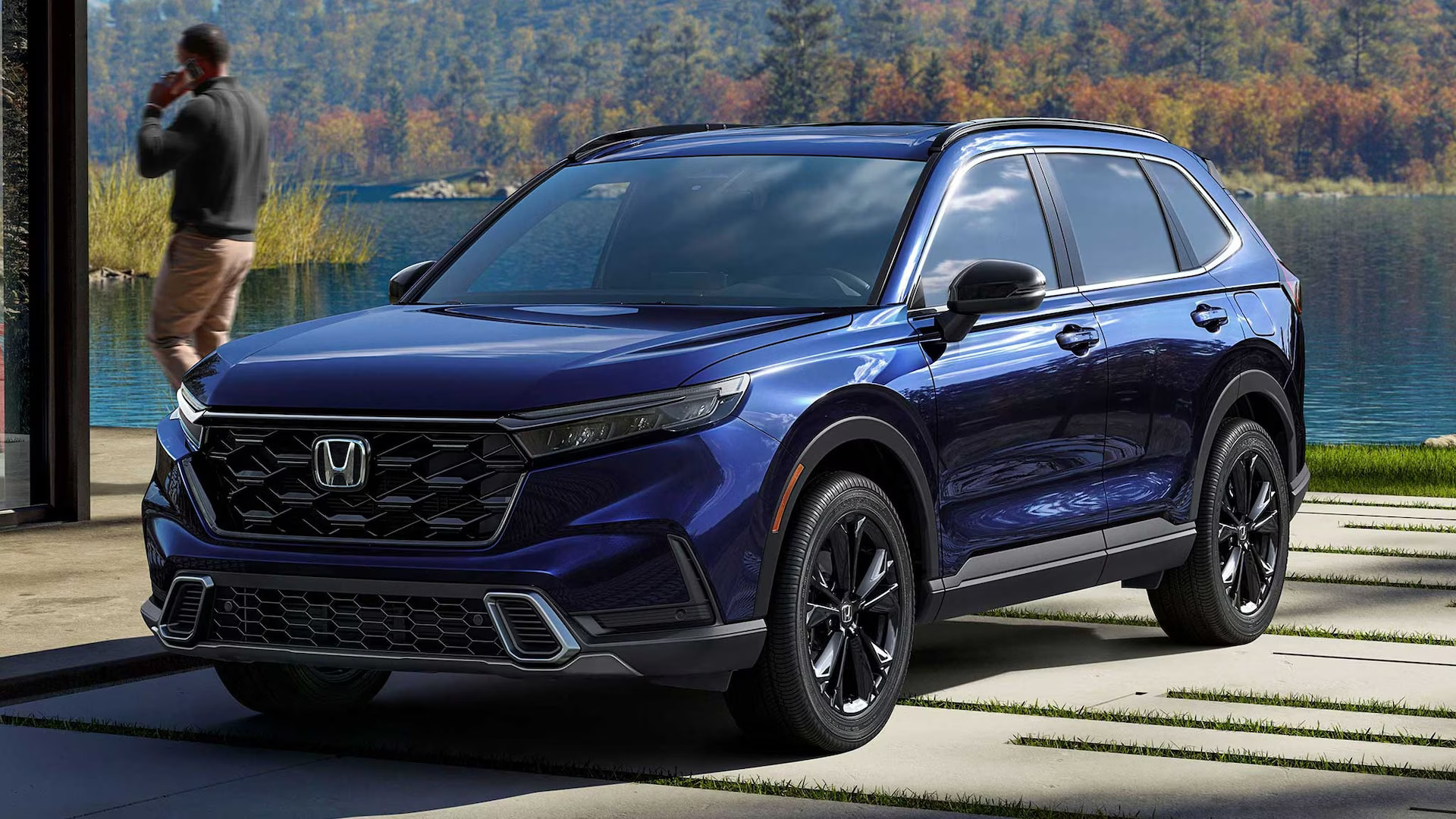
This arrangement prevents the direct mechanical stress that conventional transmissions experience during frequent speed changes in traffic. Honda’s cooling system for the CR-V Hybrid features a split design with separate circuits for the engine and the power electronics.
The power electronics cooling circuit includes a dedicated radiator with precisely controlled electric fans that maintain optimal operating temperatures for the battery pack, inverter unit, and electric motors.
This prevents thermal degradation of electronic components during extended idle periods in traffic jams. The CR-V Hybrid also employs an active grille shutter system that automatically adjusts airflow through the engine compartment based on real-time cooling needs.
When combined with the vehicle’s regenerative braking system, which reduces wear and heat generation in the conventional braking components, these features create a comprehensive thermal management approach perfectly suited for congested driving conditions.
The system’s ability to modulate between power sources prevents any single component from being overworked in traffic, ensuring temperature stability throughout the drivetrain.
3. Tesla Model 3
The Tesla Model 3 represents a fundamental departure from internal combustion vehicles in how it handles traffic situations. As a pure electric vehicle, it eliminates the primary source of overheating in conventional cars, the combustion process itself.
The Model 3’s electric powertrain generates significantly less waste heat than gasoline engines, with efficiency ratings exceeding 90% compared to roughly 30% for internal combustion engines. This fundamental efficiency advantage gives the Model 3 an inherent edge when dealing with traffic congestion.
Tesla’s sophisticated thermal management system employs a liquid cooling circuit that regulates temperatures across the battery pack, electric motor, and power electronics.
This integrated approach ensures that heat is distributed evenly and efficiently dissipated, preventing hotspots from developing during extended periods of stop-and-go driving.
The cooling system operates independently of vehicle speed, unlike traditional belt-driven cooling systems that become less effective at idle, precisely when cooling is most needed in traffic jams.
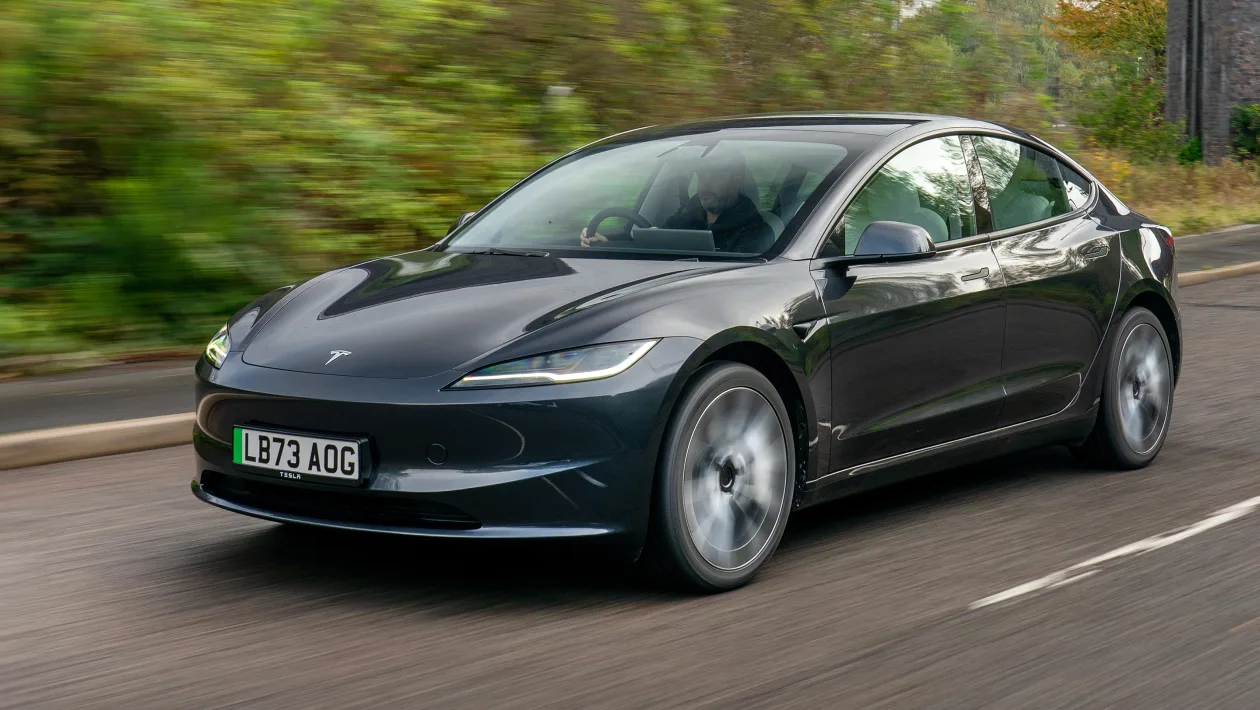
The regenerative braking system in the Model 3 converts kinetic energy back into electrical energy when slowing down, a common occurrence in traffic. This not only extends the range but also minimizes the heat generated by friction brakes.
Furthermore, when stationary in traffic, the Tesla essentially consumes minimal energy, only what’s needed for climate control and electronics, creating negligible heat compared to idling combustion engines that continuously burn fuel and generate waste heat even when not moving.
Tesla’s over-the-air update capability has allowed the company to continuously refine its thermal management algorithms based on real-world data from its global fleet.
These updates have progressively improved the vehicle’s ability to maintain optimal operating temperatures across various conditions, including dense traffic scenarios.
The Model 3’s advanced battery chemistry and cell design also contribute to its thermal stability, with cells arranged to maximize surface area contact with cooling plates and minimize heat buildup.
When combined with its single-speed transmission that eliminates the heat-generating complexity of conventional transmissions, the Model 3 presents an ideal platform for traffic-heavy commutes.
4. Lexus ES 300h
The Lexus ES 300h exemplifies Japanese engineering excellence, specifically targeted at conquering traffic congestion without breaking a sweat. Utilizing Toyota’s refined hybrid technology with luxury-oriented enhancements, the ES 300h features a sophisticated cooling system designed for prolonged operation in sub-optimal conditions.
At its core, the hybrid powertrain combines a 2.5-liter Atkinson-cycle inline-four gasoline engine with an electric motor-generator, creating multiple power paths that distribute thermal load more effectively than conventional single-power-source vehicles.
Lexus engineers implemented a dual cooling system architecture in the ES 300h, with separate circuits dedicated to the internal combustion engine and the hybrid components.
The engine cooling system features a high-efficiency water pump and a precisely calibrated thermostat that maintains ideal operating temperatures even during extended idle periods.
The hybrid component cooling circuit incorporates a dedicated radiator with variable-speed electric fans that operate independently of engine speed, ensuring consistent cooling performance regardless of traffic conditions.
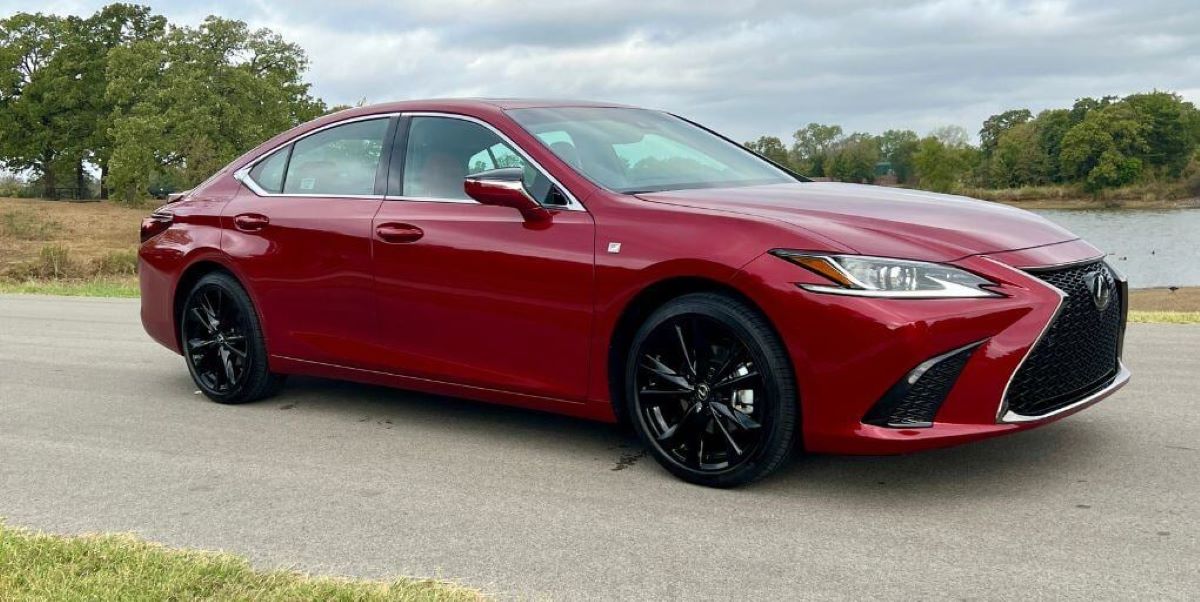
The ES 300h’s electronic continuously variable transmission (eCVT) eliminates the heat-generating torque converter found in traditional automatic transmissions.
Instead, it utilizes a power-split device that mechanically distributes engine power while allowing the electric motor to handle low-speed operation, significantly reducing friction and heat generation during crawling traffic.
Additionally, the vehicle’s power control unit features specialized heat sinks and thermal interface materials that efficiently channel heat away from sensitive electronic components.
When stopped completely, the ES 300h’s intelligent system automatically shuts down the gasoline engine, eliminating heat generation. Upon restarting, the electric motor handles initial acceleration, allowing the engine to restart under minimal load.
The regenerative braking system further contributes to thermal stability by reducing mechanical brake use in stop-and-go situations, minimizing friction-based heat generation.
All these systems are orchestrated by Lexus’s Hybrid System Control computer, which continuously monitors thermal conditions and adjusts power distribution to prevent any component from reaching critical temperatures.
This holistic approach to thermal management makes the ES 300h exceptionally well-suited for luxury commuting through even the most congested urban environments.
Also Read: 5 Reliable Manual Transmission Cars and 5 That Grind to a Halt
5. Ford Maverick Hybrid
The Ford Maverick Hybrid has rapidly earned a reputation as an exceptional performer in traffic conditions, despite its affordable price point.
This compact pickup truck combines a 2.5-liter Atkinson-cycle four-cylinder engine with an electric motor in a configuration specifically optimized for urban use cases.
The hybrid powertrain’s electronic continuously variable transmission (eCVT) eliminates the heat-generating friction points common in conventional automatic transmissions, allowing seamless operation during the constant speed transitions typical of congested traffic.
Ford’s engineers implemented a sophisticated thermal management system that prioritizes efficiency and reliability in stop-start conditions.
The system features an electric water pump that continues to circulate coolant even when the gasoline engine is shut off at stoplights, preventing heat soak that commonly affects vehicles in traffic.
This electric pump maintains consistent cooling regardless of engine RPM, a crucial advantage over belt-driven pumps that lose efficiency at idle speeds when cooling demands are highest during traffic congestion.
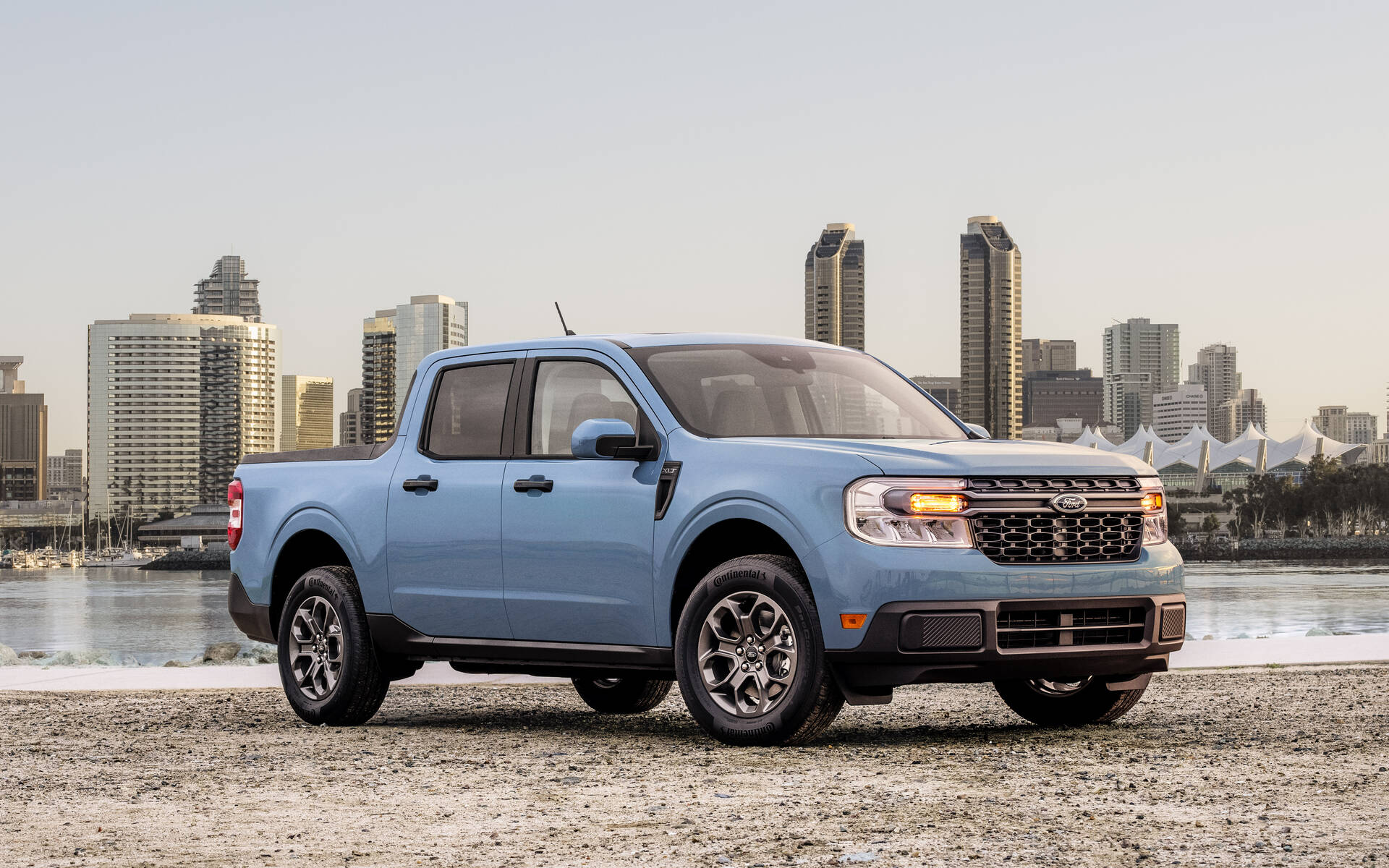
The Maverick’s hybrid system incorporates an intelligent power distribution algorithm that shifts load between electric and gasoline power sources to prevent either from operating in thermal stress zones.
During prolonged idle periods, the truck can maintain cabin climate control using the electric system while keeping the engine off, dramatically reducing under-hood temperatures compared to conventional vehicles that must keep engines running for air conditioning in traffic jams.
Ford’s hybrid battery cooling system utilizes a separate dedicated circuit with specialized coolant formulation optimized for the unique thermal characteristics of lithium-ion cells.
The battery thermal management system actively regulates temperature not just to prevent overheating but to maintain cells within their ideal operating range for maximum efficiency and longevity.
This precision approach extends to the power electronics cooling, which incorporates high-efficiency heat exchangers positioned to maximize airflow even at low vehicle speeds.
The Maverick Hybrid also benefits from aerodynamic efficiency improvements that reduce engine load in moving traffic, including active grille shutters that automatically adjust to balance cooling needs with aerodynamic efficiency.
Combined with its regenerative braking system that minimizes conventional brake usage in stop-and-go conditions, the Maverick maintains remarkably stable operating temperatures regardless of how long the traffic jam persists, making it an ideal choice for urban commuters seeking pickup utility without the typical heat-related vulnerabilities.
Vehicles That Overheat Fast
1. Dodge Challenger SRT Hellcat
The Dodge Challenger SRT Hellcat represents the epitome of American muscle car performance, but its extraordinary power comes with significant thermal challenges in traffic conditions.
Its supercharged 6.2-liter HEMI V8 engine, capable of producing up to 807 horsepower in certain configurations, generates tremendous heat even under ideal operating conditions.
In traffic scenarios, this heat production becomes problematic as the cooling system struggles to dissipate thermal energy without the benefit of high-speed airflow through the radiator.
The Hellcat’s supercharger itself is a major heat source. While it forces additional air into the engine to create massive power, the compression process substantially increases air temperature.
Dodge engineers implemented an intercooler system to address this, but in stop-and-go traffic, the intercooler’s efficiency diminishes as ambient underhood temperatures rise and airflow decreases.
The eight-cylinder configuration requires cooling across a large engine block surface area, creating additional thermal management challenges when compared to smaller engines.

Automatic transmission-equipped Hellcat models utilize a traditional torque converter that generates considerable heat during the partial engagement common in traffic situations.
While the transmission includes its cooling circuit, the system is designed primarily for high-performance driving rather than extended low-speed operation.
The vehicle’s cooling system must simultaneously manage heat from multiple high-output sources: the engine block, cylinder heads, supercharger, transmission, and differential, all while operating with restricted airflow in traffic.
The Hellcat’s performance-oriented design prioritizes power delivery over thermal efficiency in compromised conditions. Its cooling fans must work overtime in traffic, often running at maximum speed, which creates additional load on the electrical system and can contribute to even more heat generation.
The massive 15.4-inch front and 13.8-inch rear Brembo brakes, while excellent for high-speed deceleration, retain significant heat during repeated use in traffic situations, potentially leading to brake fade and further contributing to thermal issues.
Despite Dodge’s inclusion of auxiliary cooling systems and heat exchangers, the fundamental challenge remains: the Hellcat was conceived primarily for open-road performance driving, where constant airflow helps manage thermal loads.
When confined to urban congestion, the vehicle’s cooling capacity is simply overwhelmed by the sheer thermal output of its high-performance components, making it particularly susceptible to overheating issues when stuck in traffic jams.
2. Land Rover Defender (Pre-2020 Models)
The classic Land Rover Defender, particularly models manufactured before the 2020 redesign, earned a notorious reputation for overheating in traffic conditions despite its legendary off-road capabilities.
The root cause lies in its fundamentally outdated cooling system design, which originated in the 1980s and received only incremental updates throughout its production life.
The traditional Defender utilized a simple, direct cooling approach with a single radiator positioned in a relatively restricted engine bay, creating inherent airflow limitations.
Unlike modern vehicles with computer-controlled cooling systems, older Defenders relied heavily on mechanical components with limited adaptability to varying conditions.
The engine-driven water pump’s efficiency was directly tied to engine RPM, meaning cooling capacity decreased during low-speed operation, exactly when heat generation is highest.
This design flaw became particularly problematic in traffic jams where engines idle for extended periods. The thermostat designs in these vehicles also tended to be basic, sometimes failing to open fully or responding slowly to temperature changes.
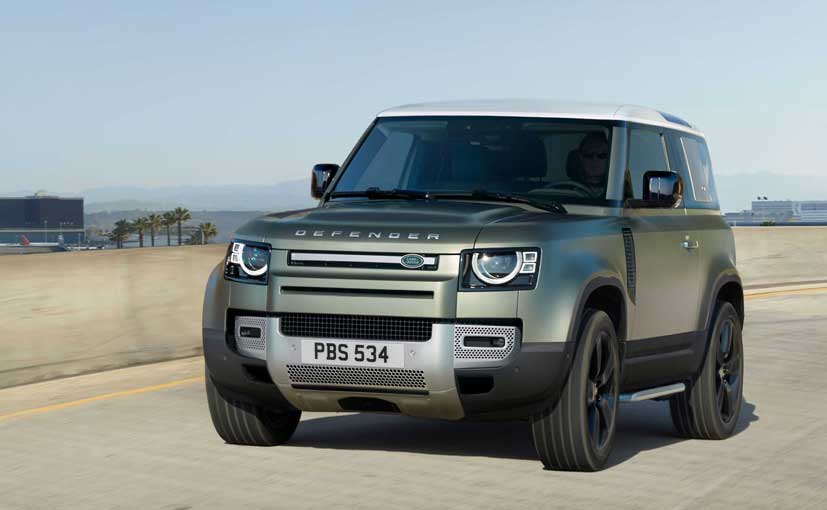
The Defender’s traditional body-on-frame construction with minimal insulation allowed significant heat transfer from the engine bay and transmission tunnel directly into the cabin, creating uncomfortable conditions for occupants during overheating episodes.
This was exacerbated by the vehicle’s upright aerodynamic profile, which limited natural airflow through the engine compartment during slow-moving traffic.
The radiator’s positioning made it vulnerable to partial blockage from accumulated mud, debris, or accessory equipment like winches, further compromising cooling efficiency.
Transmission cooling represented another weak point in the classic Defender. Earlier models featured limited or non-existent dedicated transmission coolers, relying instead on heat dissipation through the transmission case itself.
Under constant clutch engagement-disengagement cycles common in traffic, transmission fluid temperatures could rise dramatically. The situation worsened with the introduction of automatic transmission options, which generated additional heat during partial lockup situations in stop-and-go conditions.
Land Rover addressed these issues incrementally throughout production, adding auxiliary cooling fans and improved radiators in later years, but the fundamental architecture remained largely unchanged.
The vehicle’s cooling system was ultimately designed for consistent speeds in off-road environments rather than extended idling in urban congestion.
This engineering compromise meant that despite the Defender’s reputation for surviving extreme conditions worldwide, it remained paradoxically vulnerable to the mundane challenge of rush hour traffic throughout its classic production run.
3. Lamborghini Aventador
The Lamborghini Aventador represents the pinnacle of Italian supercar engineering, designed primarily for high-speed performance rather than urban practicality.
Its naturally aspirated 6.5-liter V12 engine, producing over 700 horsepower, creates extraordinary thermal challenges when confined to traffic conditions.
The engine’s basic architecture with twelve cylinders arranged in a V configuration inherently generates massive heat even at idle, requiring sophisticated cooling systems that function optimally only with substantial airflow, typically absent in congested driving.
Lamborghini’s engineers designed the Aventador’s cooling system around the assumption of consistent high-speed operation, where the ram-air effect forces cool air through the radiators. In traffic situations, this natural airflow disappears, forcing the system to rely entirely on electric fans.
Despite using multiple high-output fans, the system struggles to evacuate heat from the tightly packaged engine bay.
The V12’s placement mid-mounted in an enclosed compartment with limited ventilation creates a heat-soak environment where temperatures can rise precipitously during extended idle periods.

The Aventador’s single-clutch automated manual transmission, branded as ISR (Independent Shifting Rod), presents another significant heat source.
Unlike modern dual-clutch systems or traditional automatics, this transmission generates substantial friction heat during the constant clutch engagement and disengagement cycles of stop-and-go traffic.
The transmission’s cooling requirements compete with the engine cooling system for the limited airflow available in traffic situations, creating a compounding thermal challenge.
The vehicle’s carbon fiber monocoque chassis, while excellent for structural rigidity and weight savings, provides minimal thermal insulation between the powertrain and passenger compartment.
As underhood temperatures rise in traffic, this heat transfers directly to the cabin, creating uncomfortable conditions for occupants and placing additional load on the climate control system, which in turn generates more heat from increased compressor operation.
Lamborghini implemented several technical solutions to mitigate these issues, including cylinder deactivation technology that can shut down one bank of cylinders during light load conditions.
However, the fundamental thermal management challenge remains: the Aventador was conceptualized and optimized for high-speed driving scenarios where its aerodynamic design creates cooling airflow patterns that simply don’t materialize in traffic conditions.
The resulting tendency toward rapid temperature increases in congested driving represents an inherent compromise in a vehicle designed primarily as a statement of automotive engineering excellence rather than daily transportation practicality.
4. Jeep Wrangler (JK Generation, 2007-2018)
The JK generation Jeep Wrangler, while celebrated for its off-road prowess and iconic design, developed a well-documented reputation for struggling with temperature management in traffic conditions.
The root cause stems from a combination of engineering choices that prioritized rugged off-road capability over thermal efficiency in urban environments.
The JK’s upright, boxy profile creates significant aerodynamic drag, forcing the engine to work harder even at modest speeds and generating excess heat during the constant acceleration-deceleration cycles common in traffic congestion.
The cooling system design in the JK Wrangler features a relatively compact radiator positioned in a restricted airflow environment. The vehicle’s signature seven-slot grille, while iconic, provides a limited actual cooling surface area compared to modern vehicles with larger front openings.
This design limitation becomes particularly problematic in traffic where natural airflow is minimal, forcing the cooling fans to work continuously.
The traditional body-on-frame construction with minimal insulation allows engine heat to transfer readily into the passenger compartment, creating uncomfortable conditions during extended idle periods.
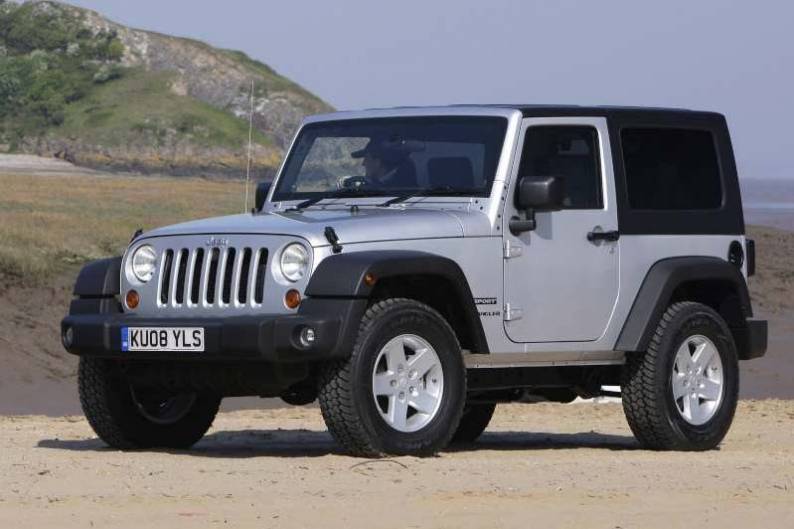
The 3.6-liter Pentastar V6 engine that powered most JK models (replacing the earlier 3.8L engine in 2012) generates considerable heat under load, especially when equipped with aftermarket accessories common among Wrangler enthusiasts.
Lifted suspension, oversized tires, and additional underbody armor all increase engine load and consequent heat generation.
The automatic transmission models employ a traditional torque converter design that heats up significantly during the partial engagement phases inevitable in stop-and-go traffic.
Jeep’s cooling system vulnerabilities became most apparent when owners added aftermarket modifications like winches, light bars, or bull bars that restricted airflow to the radiator.
The factory cooling system had minimal excess capacity to accommodate these popular additions, creating a narrow margin between normal operation and overheating in challenging conditions.
The problem extends to the air conditioning system, which shares cooling responsibilities with the radiator. In traffic situations with high ambient temperatures, the AC compressor adds a significant load to the engine while simultaneously competing for the limited cooling capacity.
While Jeep implemented several improvements throughout the JK’s production run, including revised cooling fan programming and upgraded radiators on certain models, the fundamental architecture remained largely unchanged.
The JK Wrangler’s cooling system was ultimately designed with a bias toward moderate-speed operation in off-road environments rather than extended idle periods in urban congestion, a compromise that became increasingly apparent as more Wranglers found themselves serving as daily drivers in densely populated areas rather than weekend warriors on wilderness trails.
5. BMW M3 (E46 Generation, 2000-2006)
The E46 generation BMW M3, while revered among enthusiasts for its perfectly balanced handling and high-revving naturally aspirated inline-6 engine, harbors a well-documented vulnerability to overheating in traffic conditions.
This issue stems primarily from BMW’s engineering priorities when developing this performance icon. The S54 engine a 3.2-liter masterpiece producing 333 horsepower was designed to deliver exceptional performance at high RPMs, with thermal management optimized for spirited driving rather than urban congestion.
The cooling system represents the E46 M3’s most notorious weakness, with several interdependent components prone to failure under heat stress. The water pump, constructed with a plastic impeller to reduce rotational mass, becomes increasingly brittle with thermal cycling and can catastrophically fail without warning.
The expansion tank, also plastic, suffers from similar degradation over time, developing hairline cracks that lead to coolant loss. These vulnerabilities become particularly problematic in traffic where the cooling system operates continuously near its limits.
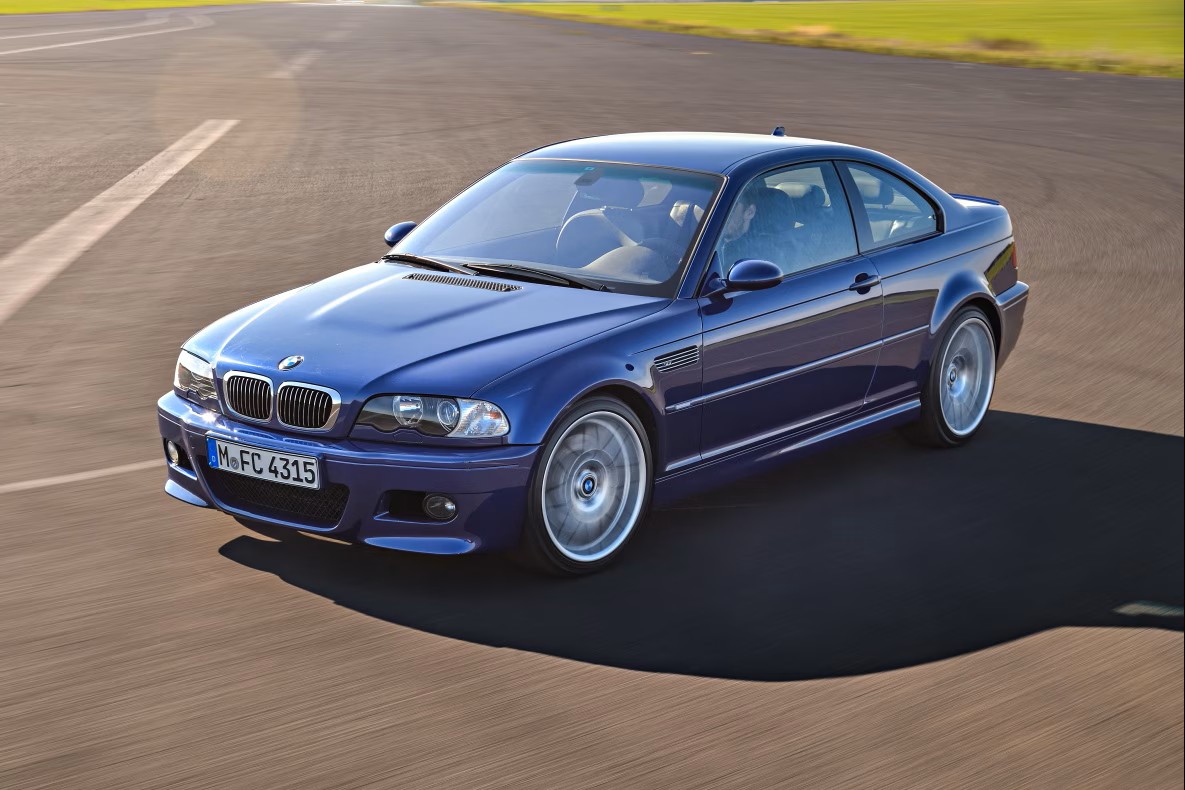
BMW’s radiator design for the E46 M3 proved marginally adequate for the vehicle’s heat rejection needs, offering little excess capacity for extended low-speed operation.
The factory radiator positioning, while aerodynamically efficient at highway speeds, receives limited airflow during idle conditions in traffic.
Electric cooling fans struggle to compensate for this reduced natural airflow, often running at maximum capacity during traffic jams and creating additional load on the electrical system.
The S54 engine’s high-performance design features contribute directly to its heat management challenges. Its high compression ratio (11.5:1) and aggressive valve timing create efficient power production but generate significant heat even under modest loads.
The engine’s relatively high-strung nature means it produces more heat per horsepower than contemporary, more conservative designs. Additionally, the engine oil cooling system, critical for maintaining proper lubricant viscosity, shares thermal load with the already-stressed main cooling system.
The E46 M3’s electronic cooling system management, advanced for its era, lacks the sophisticated adaptive strategies found in more modern vehicles. Its programming prioritizes maintaining precise operating temperatures for optimal performance rather than providing headroom for extreme conditions.
This approach works beautifully during spirited driving but proves problematic during extended idle periods where heat generation exceeds dissipation capacity.
These combined factors explain why a performance car engineered for the autobahn can find itself surprisingly vulnerable when confined to rush hour on congested urban thoroughfares.
Also Read: 5 Vehicles That Make Great Workhorses and 5 That Fail At It

